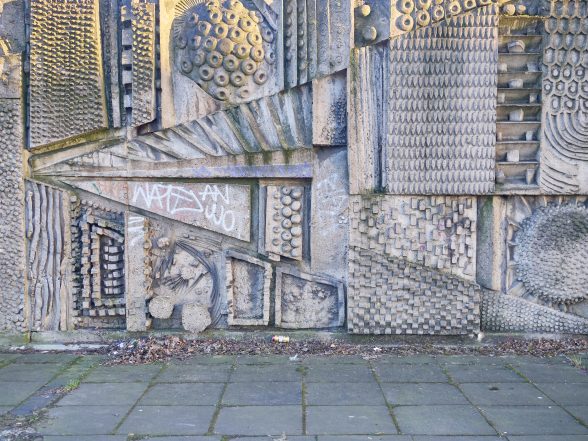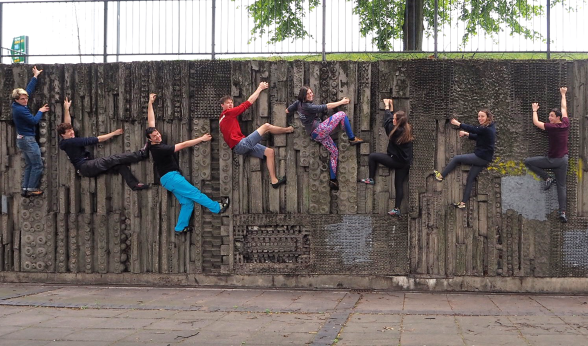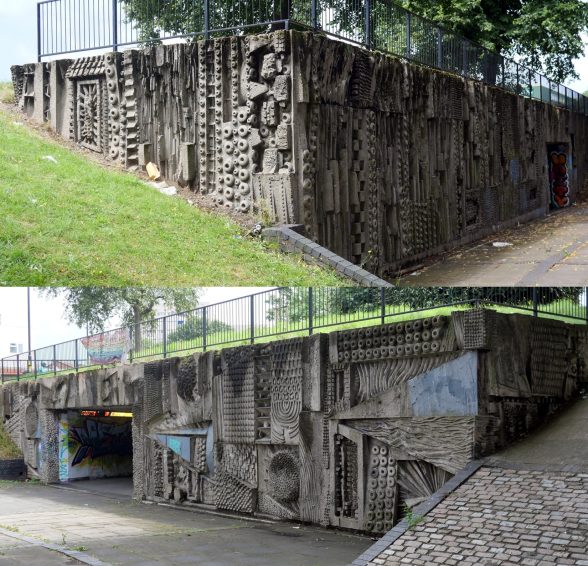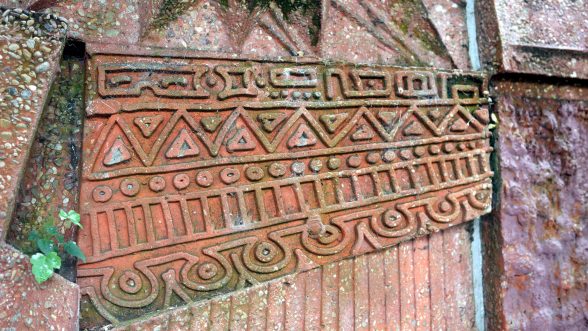This website uses cookies
This website uses cookies to enable it to function properly and to analyse how the website is used. Please click 'Close' to accept and continue using the website.



Image: Martin McDonald – Flickr
A sequence of concrete murals known as a ‘Brutalist Climbing Wall’ in Birmingham have been Grade II listed, after an application submitted by C20 Society members in the West Midlands.
The three murals by William Mitchell flank the entrance to a pedestrian underpass beneath the ‘Hockley Circus’ flyover, and were commissioned as part of the Birmingham outer ring road development, opened in 1968. Designed to encourage public interaction with the artwork, Mitchell expressed pride that people felt encouraged to climb on them, noting that this allowed them to become a part of society. They recently attracted attention when climbers from the University of Birmingham Mountaineering Clubs – more used to scaling peaks in Snowdonia or the Lake District – took the sculptures and plotted new bouldering routes across them.

Image: Heather Connor
The 3 metre high mural walls are cast in pigmented concrete and feature deeply profiled surface finishes, treated with bush hammers and sand blasted to appear like natural rock. Each mural has a slightly different character, incorporating geometric shapes, abstract patterns, and naturalistic forms. Unifying motifs of sunbursts, donuts, triangular wedges and shards are interspersed with Aztec like symbols, highly distinctive of Mitchell’s style.
William Mitchell (1925-2020) was a prolific and innovative architectural sculptor who worked in various materials but most notably concrete. He began his career in the 1950s as a Design Consultant for London County Council and set up his own company in the 1960s. He gained an international reputation for his highly textured, abstract reliefs and murals, often referred to as Aztec or pagan in style, though Mitchell denied there being any conscious influence. He worked with highly respected architects and engineers of the time, including Ove Arup and Sir Frederick Gibberd, and his work appeared in many public settings such as schools, subways and public housing developments

Image: Dauvit Alexander – Flickr
The deep relief casting and rounded forms of the Hockley murals are reminiscent of Mitchell’s earlier work at The Three Tuns in Coventry (1966, Grade II) also characterised by his lively, textured ‘Aztec’ style. However, the Hockley pieces also bridge the development of his ideas into more naturalistic and geometrically arranged forms, which appear more prevalently in his later works incorporated into transport infrastructure, such as the retaining wall above Hoo Road in Kidderminster (1972-1973, Grade II). Mitchell himself expressed that ‘Hockley flyover was one of the greatest things that ever happened in this country because it was the first of its kind and certainly of its scale.’
C20 Caseworker Coco Whittaker commented:
“C20 Society is delighted that these dynamic and playful Mitchell murals have been listed. This follows on from the listing of Mitchell’s Kidderminster wall in December 2020, and is another fabulous sculptural work created to enliven a 1960s/70s road development – both show the importance of public art in this period and the way it was integrated with architecture. It’s wonderful to see growing appreciation for Mitchell and greater recognition for his contribution to British art and architecture in the post-war period.”

Image: Dauvit Alexander – Flickr

Become a C20 member today and help save our modern design heritage.